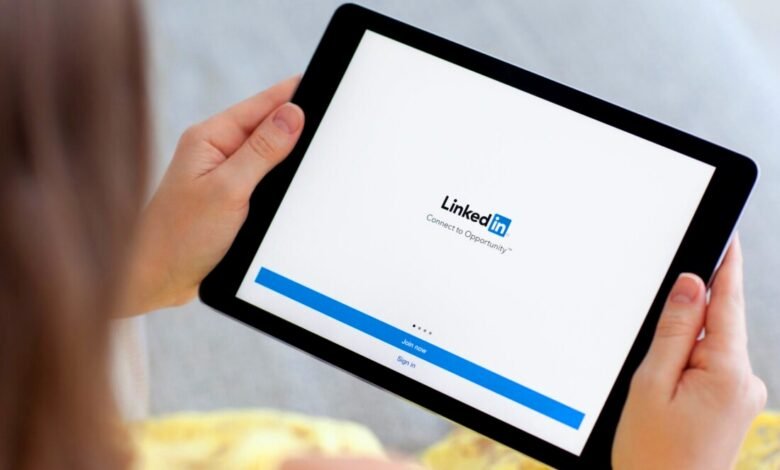How to Write an Effective LinkedIn Profile That Gets You Noticed
This guide will walk you through every step to create an Effective LinkedIn Profile that truly gets you noticed.

In today’s digital-first world, your LinkedIn profile is often the first impression you make on recruiters, clients, and industry peers. Crafting an effective LinkedIn profile is essential not just for job seekers but for anyone aiming to build a strong professional brand. A well-optimized profile can open doors to new opportunities, strengthen your network, and establish your credibility.
This guide will walk you through every step to create an effective LinkedIn profile that truly gets you noticed.
Why an Effective LinkedIn Profile Matters
LinkedIn is more than a digital resume. It’s a platform for personal branding, professional storytelling, and meaningful networking. Whether you’re actively job-hunting or simply building your influence, an effective LinkedIn profile can help you:
- Increase visibility among recruiters and hiring managers
- Expand your professional network
- Showcase your skills, accomplishments, and expertise
- Build trust and authority in your field
- Drive business development and partnership opportunities
Now, let’s dive into how you can create an outstanding profile that leaves a lasting impression.
1. Perfect Your Profile Photo
Your profile photo is the first visual impression you make. A professional, high-quality headshot dramatically increases the chances of your profile getting viewed.
Tips for an effective profile photo:
- Wear professional attire relevant to your industry.
- Choose a plain, non-distracting background.
- Use good lighting and a friendly, approachable expression.
- Ensure the photo is recent and looks like you.
Studies show that LinkedIn profiles with professional photos receive up to 21 times more profile views and 36 times more messages.
2. Craft a Compelling LinkedIn Headline
Your LinkedIn headline isn’t just your job title; it’s your tagline. Think of it as a mini-pitch that instantly communicates your value proposition.
Best practices for a LinkedIn headline:
- Incorporate keywords related to your skills and industry.
- Showcase your specialty or what sets you apart.
- Keep it clear, concise, and engaging.
An effective LinkedIn profile leverages the headline space to make a memorable impact at a glance.
3. Write a Powerful LinkedIn Summary (About Section)
Your LinkedIn summary is your personal story. It’s your chance to showcase who you are beyond your resume.
What to include:
- Your professional journey and passion
- Key accomplishments and skills
- What you’re looking for or your professional goals
- A call to action (invite people to connect, visit your website, etc.)
Tips for a strong summary:
- Start with a hook or interesting statement.
- Write in the first person to sound authentic.
- Use short paragraphs and bullet points for easy reading.
- Incorporate relevant keywords naturally.
4. Optimize Your Experience Section
Your experience section should do more than list job duties. It should highlight achievements, leadership roles, and quantifiable successes.
Best practices:
- Use bullet points to organize responsibilities and achievements.
- Begin each bullet with strong action verbs.
- Quantify results where possible (“Increased sales by 30% in 6 months”).
- Incorporate keywords that recruiters search for.
This section should read like a results-driven story, reinforcing the value you bring.
5. Showcase Your Skills Strategically
LinkedIn allows you to list up to 50 skills. Use this wisely!
How to choose the right skills:
- Prioritize skills most relevant to your career goals.
- Include a mix of technical skills (e.g., SEO, data analysis) and soft skills (e.g., leadership, communication).
- Regularly update and refine your skills based on your evolving experience.
Getting endorsements for these skills also boosts your credibility. A strong skills section is a hallmark of an effective LinkedIn profile.
6. Request Recommendations
Recommendations act as testimonials, adding third-party validation to your profile.
Tips for gathering recommendations:
- Reach out to colleagues, supervisors, clients, or mentors.
- Personalize your request and explain what you’d like highlighted.
- Offer to write a draft or reciprocate.
A few genuine, well-written recommendations can significantly enhance the perceived authenticity of your effective LinkedIn profile.
7. Engage With Content
Being active on LinkedIn is crucial for maintaining visibility.
Ways to engage:
- Share articles, insights, and original thoughts.
- Comment thoughtfully on others’ posts.
- Write your own LinkedIn articles.
- Congratulate others on their accomplishments.
Engagement signals to LinkedIn’s algorithm that you are active, which can lead to more profile views and connection requests.
8. Customize Your LinkedIn URL
A customized LinkedIn URL looks cleaner, is easier to share, and shows professionalism.
How to customize:
- Go to your LinkedIn profile.
- Click “Edit public profile & URL.”
- Choose a URL like linkedin.com/in/YourName or YourNameProfessionalKeyword.
Adding a personalized URL to your email signature, resume, and business cards is a smart move for your personal branding.
9. Highlight Certifications and Courses
Today’s fast-evolving industries value continuous learning.
What to showcase:
- Industry certifications (e.g., PMP, Google Analytics, AWS)
- Professional development courses
- Webinars, seminars, or workshops attended
Certifications demonstrate initiative and a commitment to staying updated—both important elements of an effective LinkedIn profile.
10. Join and Participate in LinkedIn Groups
LinkedIn Groups offer networking opportunities and knowledge sharing.
Benefits of joining groups:
- Stay updated on industry trends.
- Connect with like-minded professionals.
- Share your expertise and grow your influence.
Be an active participant, not just a passive member, to enhance your professional branding.
11. Pin Featured Content
The “Featured” section allows you to highlight key accomplishments, work samples, or content.
Ideas for featured content:
- Published articles
- Project portfolios
- Awards and recognitions
- Case studies
An effective LinkedIn profile showcases tangible examples of your work, boosting your credibility.
12. Regularly Update Your Profile
Your LinkedIn profile is a living document. As you grow, so should your profile.
Update when you:
- Change roles or receive a promotion
- Complete a major project
- Gain new skills or certifications
- Achieve noteworthy accomplishments
Keeping your profile fresh ensures you stay relevant and attractive to recruiters and collaborators.
Common Mistakes to Avoid
Creating an effective LinkedIn profile also means steering clear of these pitfalls:
- Using buzzwords without backing them up (e.g., “guru,” “rockstar”)
- Having an incomplete profile
- Ignoring your headline and summary
- Leaving typos and grammatical errors
- Overlooking the power of visuals (profile photo, banner image, featured content)
Final Thoughts: Your Effective LinkedIn Profile as Your Career Asset
Your LinkedIn profile isn’t just a static page; it’s a dynamic tool for career development, networking, and personal branding. An effective LinkedIn profile tells your professional story, highlights your unique value, and positions you for success in a competitive market.
By following these detailed strategies — from optimizing your headline and summary to showcasing your skills and actively engaging with content—you’ll be well on your way to creating a profile that doesn’t just exist but thrives.
Ready to take your LinkedIn game to the next level? Start implementing these tips today, and watch your opportunities expand!











